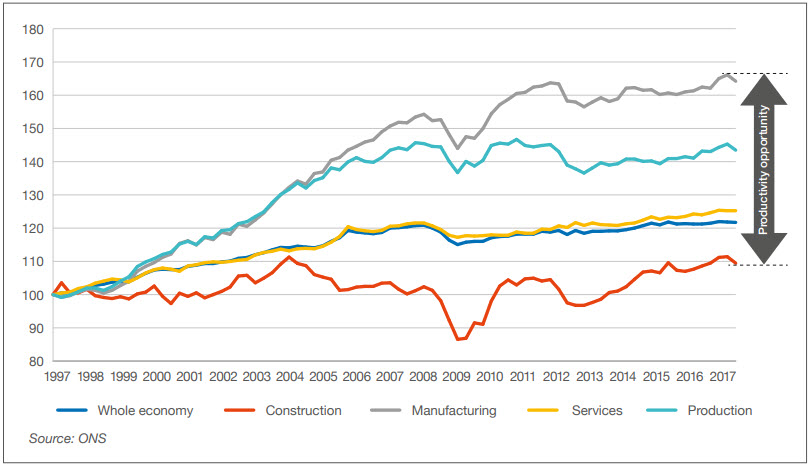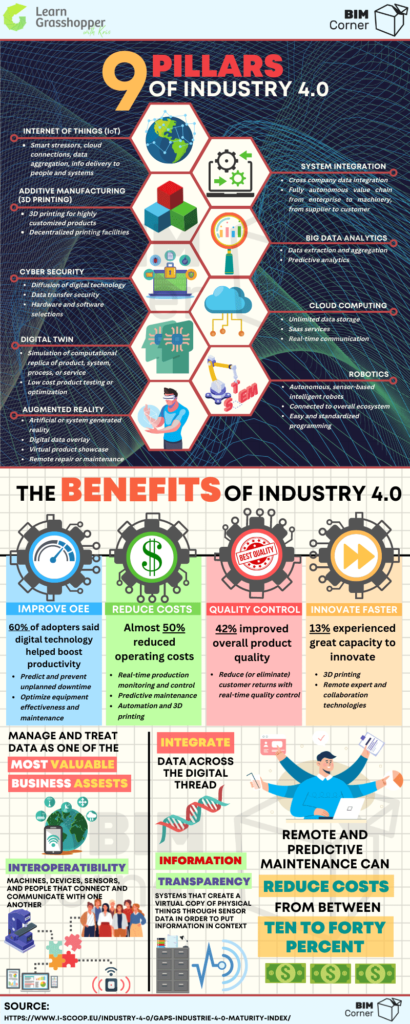The Architectural Engineering Construction (in short: AEC) market plays a crucial role in the economy since it connects both science and industry. However, a lack of productivity growth and neglected investment in digitalisation negatively impacts the construction industry. Young engineers prefer to work in more digital developed industries than work in the same way as it was 20-30 years ago. It seems that change is inevitable. It’s likely that engineers will be required to do a wider range of tasks in the future than they are doing right now. The interesting questions are: what will be the work of future engineers due to emerging technologies? What will engineers of future look like, and how will they meet the demands of tomorrow’s society? Let’s take a look.
Table of Contents
1.0. The Construction industry matters
In 2020 Oxford Economics estimated the global construction market was valued at US$10.7 trillion. It means that the construction sector is one of the largest in the world economy. [1] This ecosystem represents 13 % of global GDP- the sector employs 7 % of the world’s working population. The construction industry spends about 40% of the world’s energy and about 30% of the world’s carbon emissions. [2]
These are huge numbers and tell us a lot about the size of the industry. Besides the impact on the global economy, this sector influences all of us. We are all surrounded by products of the construction industry. We use buildings, schools, hospitals and roads every day.
Agriculture is ahead of the AEC industry
2.0.Construction has a productivity problem
The 10% increase in productivity in the last twenty years is an incredibly poor performance by the whole industry. There are plenty of reasons why it is like that. For example, the industry is dependent on the public sector, which is extensively regulated. In the free market, it is hard to find workers with sufficient skills. It is hard to believe, but most of the work at the site is being done in the same way as in the last century.
Of course, we can’t really compare the construction industry with manufacturing. Construction projects are not the same as work in factories where you have repetitive and schematic work in the same conditions and with the same products. Although, some experts predict that by 2050 there won’t be a single human working in either factories or construction sites. In my opinion, it is possible for factories, but I’m not so sure about the construction site. Construction projects are incredibly complex and involve people from many disciplines. There are contractual misunderstandings, poor communication, and insufficient risk management. All that makes it really hard to be super productive. One thing is sure: changes are needed, and they are needed urgently.
Digitalisation - last place, again
I also have to write that together with the lowest productivity numbers, the industry is also the least digitised among all others [3]. Agriculture and others are again ahead. I am 100% sure that these two numbers (productivity and digitalisation level) are interdependent in all. The engineering projects demand a huge amount of manhours, and seemingly we’re not getting better at it at all as an industry with declining efficiency and a huge number of cost overruns and delays. So naturally, we need to be more efficient. We need to automate manual labour! We also need to utilise the power of the computers around us.
This MGI research indicates that making a digital transformation alone can result in productivity gains of about 15% and cost reductions in the range of 4 to 6% [4]. At first glance, these numbers are not astonishing. However, as I mentioned in the first section – scale of the industry matters here. Even single digits of cost reduction will result in millions of dollars in savings.
Cities and workplaces will be radically changed
3.0. The future engineers are coming
On the one hand, these extraordinary changes will cause difficulties and more demanding work. Engineers will be required to do much more in the future than now.
On the other hand, significant innovations are on the horizon in various fields, including civil engineering, energy, medicine, transportation, robotics, and sustainability. Engineers will play a key role in inventing and developing the technologies of the 21st century. And they won’t be much like the engineers of the past.
Over the next three decades, we’ll see more development and changes in the field of engineering than possibly ever before. Many machines will be autonomous and self-assembling. Construction will develop through prefabrication, modular production and 3D printing. More and more of our data will be collected in order to help with decision-making. All in all, construction processes will have nothing in common with the old-fashioned “pen and paper“ methods.
Engineering as we know it today has to change and must become more agile. Workers will be more flexible and have skills in a variety of software, processes and scripting languages. Technical skills for production management such as analysing, modelling and simulating the production system based on big data from sensors and the use of collaborative robots will be essential.
New Opportunities are coming on the horizon
Soft skills will be crucial for future engineers as well
Interpersonal skills, together with creativity, will be far more crucial in the employment market for engineers. Skills such as the ability to work with others, presentation, and willingness to learn and explore new knowledge will still be present. It will be important to be able to convey information regarding process automation, algorithms and service orientation in a way that is understandable for those without technical education.
Problem-solving skills and systematic thinking will be one of the most desired skill areas, among others. This will require creativity and the ability to organize brainstorming sessions and coordinate work with others.
In other words, all of the skills and qualities that machines cannot yet imitate will be crucial. Robots are amazing and will play a significant role in the near decades. However, soft skills will still be on the human side. They will help the engineering workforce to continue to drive progress forward.
4.0. Summary
Digitalization in the construction world is in its infancy – but it is happening. If the industry misses out on opportunities for the implementation of a real digital strategy, it could turn out that it will be too late to jump into the high-speed train called digitalisation. Of course, willingness to change should be anchored in the top management of each company. But the biggest change should be done from the bottom.
The good news is that there are lots of perspectives. The digitalisation journey shines a bright light on the future of engineering. Mostly, because more technological advances in this field could benefit us all. This is arguably the best time in history to get into an engineering field or career. Whether you are an experienced engineer, an engineer at the start of your career, or a student with aspirations to become an engineer, Industry 4.0 presents considerable opportunities. All this makes a career in the engineering sector an exciting and ever-changing one.
Below you can find 9 Pillars of Industry 4.0. Where do you find opportunities in the AEC industry? Write your thought in comments below.
[1] Future of Construction, A Global Forecast for Construction to 2030, 2020, Oxford Economics, Huy Carpenter
[2] Reinventing construction: a route to higher productivity, 2017. McKinsey and Company
[3] Digital America: A tale of the haves and have-mores, https://www.mckinsey.com/industries/technology-media-and-telecommunications/our-insights/digital-america-a-tale-of-the-haves-and-have-mores
[4] Twenty-five years of digitization: Ten insights into how to play it right, 2019, McKinsey Global Institute
[5] How Can We Prepare Kids For Jobs That Don’t Exist Yet?Website https://www.huffpost.com/archive/ca/entry/how-can-we-prepare-kids-for-jobs-that-dont-exist-yet_b_16687862

Check out my other articles on BIM Corner:
Computational Thinking-Why should engineers care about it?
BIM in Grasshopper – The ultimate software list
Grasshopper Data Tree – Path Mapper is a BADASS














Excelent article!
Thanks Daniel!
Thanks for the article Krysztof! I see it already happening; we are currently working right next to automation (robotics and assisted content processing). I often explain to young students that I mentor that they will have two career paths; robot handler or artist. Future engineers will be both.
Hi Keith! Thanks for this comment! My opinion is the same! I see students starting jobs after graduation and already applying programming at work. it just goes to show which direction it is going.
Interested to read, Here I’m confused to find right direction to take my career from Precast computer added drafter to higher level. I believe technology study is more powerful compare others. This article helps some of points, happy to pursue reading. Thank you .
My pleasure! Cheers from Norway, Antony!
Hello very usefull website .
Thanks.
I began to training Dynamo and Grasshopper together.
You’re welcome! Remember to subscribe to learngrasshopper.com in order to get valuable tips on how to learn Parametric Design.
Kris